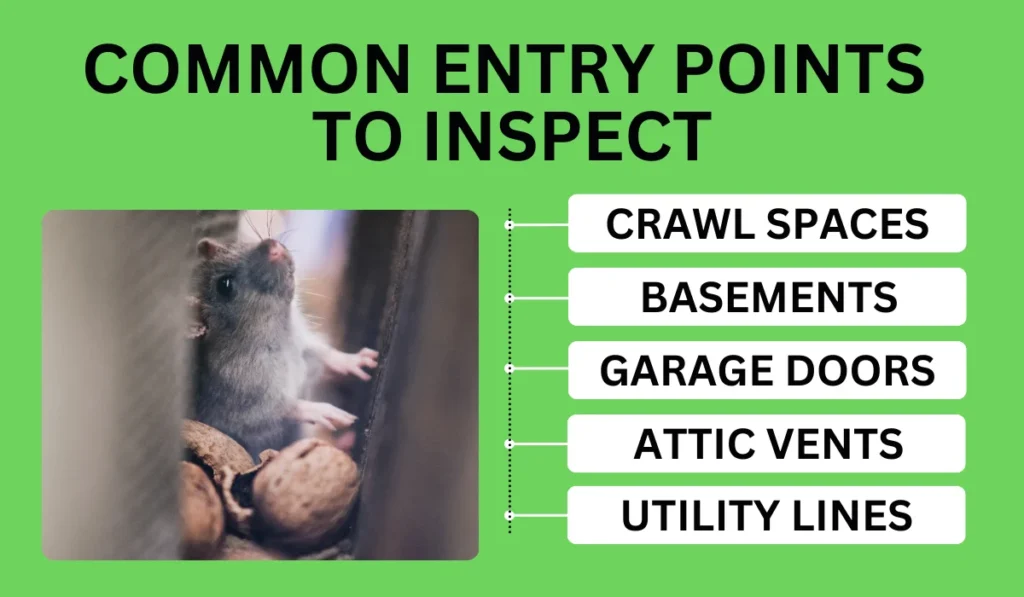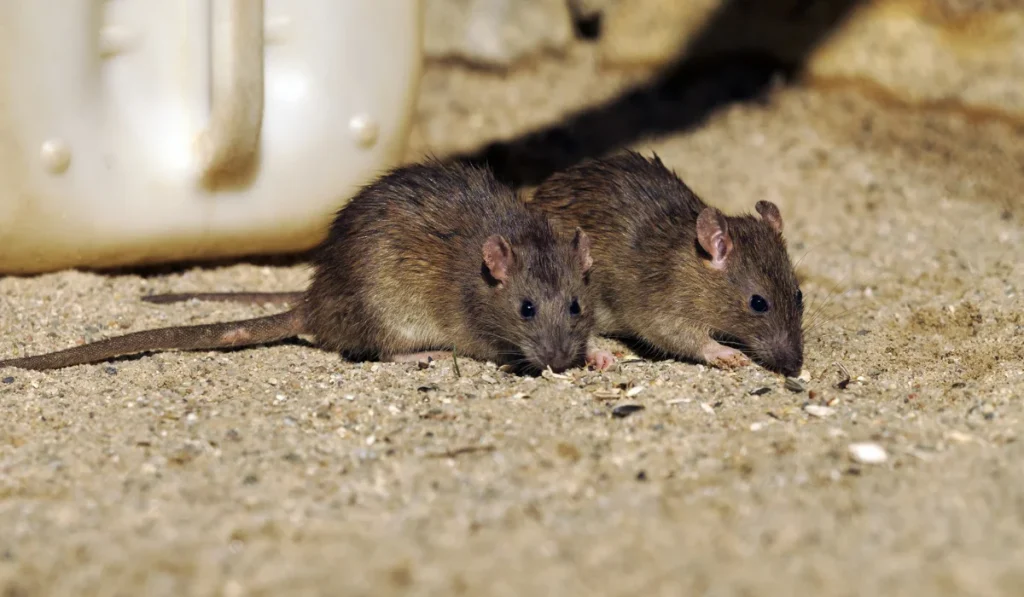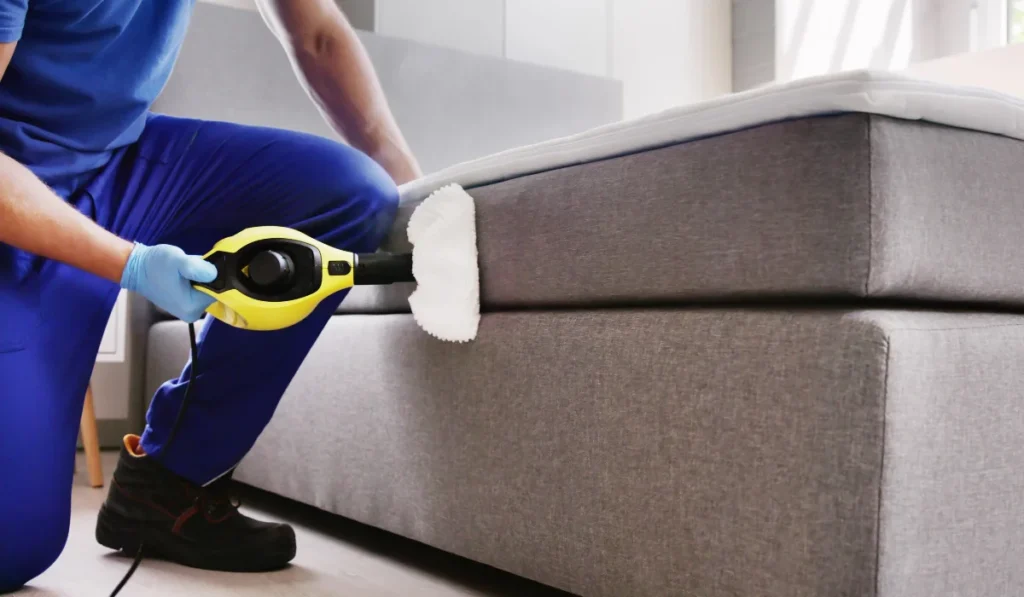When the weather cools in Michigan, mice start looking for warm, safe places with easy food sources, and your home is high on their list.
The best way to prevent a mouse infestation is with exclusion, a proven method of sealing off every crack, gap, and hole they could squeeze through.
In this guide, you’ll learn how exclusion works, why it’s more effective than relying on traps alone, and what steps you can take to protect your home in Kalamazoo, Grand Rapids, and beyond.
Key Takeaways
- Exclusion stops mice from entering by sealing all entry points around your home.
- Common access points include gaps around utility lines, crawl spaces, and garage doors.
- Materials like steel wool, hardware cloth, and caulk are key to effective mouse exclusion.
- Professionals help keep rodents out for good.
Why Mice Move In During Fall
As temperatures drop, mice naturally seek warmth, shelter, and reliable food sources. Homes provide all three. Even a tiny gap, as small as a dime, can be a potential entry point. Once inside, mice multiply quickly, turning a minor problem into a full-blown rodent infestation.
Mice don’t just cause damage; their droppings can spread bacteria, contaminate food, and ruin insulation or wiring.
Understanding Rodent Exclusion
Rodent exclusion means sealing every gap, crack, or opening that mice could use to get inside. Instead of waiting for signs and using traps or poison, exclusion stops mice from entering in the first place. It’s a safer, longer-lasting solution that reduces health risks, prevents future rodent problems, and avoids the need for rodenticides.
Benefits of Exclusion Over Other Methods
- Long-term protection: Once you seal the gaps, they stay sealed.
- Safe for families and pets: No poison or unsafe traps left around.
- Addresses the root cause by keeping rodents from entering in the first place.
Common Entry Points to Inspect

If you’re doing your inspection, start with these high-risk areas:
- Crawl spaces: Mice often find openings along vents or foundation cracks.
- Basements: Look around windows, door frames, and utility penetrations.
- Garage doors: Check for worn seals or gaps at the bottom corners.
- Attic vents: Ensure the screens are intact and made of materials mice can’t chew through.
- Utility lines: Small openings around pipes and wires are a favorite mouse highway.
Even a tiny gap is enough for a mouse to get inside. The more thorough your inspection, the better.
Exclusion Techniques and Materials
Professional exclusion work relies on durable, mouse-proof materials. If you’re attempting DIY rodent control, here are a few essentials:
- Steel wool: Excellent for stuffing small gaps, often combined with caulk to keep it in place.
- Hardware cloth: Ideal for covering larger holes, vents, or gaps under decks.
- Caulk: Seals cracks in siding, window frames, and baseboards.
- Door sweeps: Block gaps under exterior doors.
- Seal gaps: Use a combination of foam and wire mesh for larger voids.
Why Materials Matter
Mice can easily gnaw through soft materials like foam. Combining tough materials and sealants ensures long-lasting protection.
Reducing Attractants Inside and Out
Even with good exclusion, it helps to make your home less appealing to mice:
- Store pet food and pantry items in airtight containers.
- Keep garbage in sealed containers with tight-fitting lids.
- Clean up crumbs, spills, and droppings promptly.
- Organize storage areas so boxes aren’t stacked against walls where mice can hide.
- Keep landscaping trimmed and away from the home’s foundation to limit cover.
How Professional Exclusion Services Work
What professionals do:
- Inspection: A thorough check of your home’s exterior and interior for potential entry points.
- Sealing entry points: Using materials like hardware cloth, steel wool, and caulk to seal gaps.
- Installing physical barriers, Such as door sweeps or reinforced vent covers.
- Monitoring: Setting traps as a backup if mice are already inside.
- Follow-up: Ensuring all exclusion work is intact and effective.
If an infestation is already active, a licensed exterminator may also be needed to remove mice before exclusion work begins.
Avoiding Future Infestations
Regularly inspecting your home’s perimeter, keeping storage areas tidy, and maintaining door and vent seals can help prevent future infestations. Pairing these habits with professional pest control inspections each year ensures your home remains a no-entry zone for mice.
When to Call in the Pros
DIY exclusion can work for minor fixes, but larger or older homes often have hidden gaps that are easy to overlook. That’s where Pest Pros of Michigan comes in. As a trusted pest control company, we use proven rodent control techniques, heavy-duty materials mice can’t chew through, and a trained eye to seal every potential entry point, so nothing gets missed.
We offer:
- Full-home inspections to uncover all rodent access points
- Durable, chew-proof materials for long-lasting protection
- Follow-up visits to make sure your home stays mouse-free
- Lifetime warranties so you’re covered long-term
Ready to seal out mice for good? Contact us today to schedule your inspection and take the first step toward a rodent-free home.
FAQs
What is the most effective way to keep mice out?
The most effective way is sealing all gaps with tough materials like steel wool, caulk, and hardware cloth to keep mice from getting inside in the first place.
Can I do mouse exclusion myself?
Yes, if you do a thorough inspection and use proper materials. But pros often spot hidden gaps and use longer-lasting methods.
How do I know if I have a mouse infestation?
Common signs of rodents include droppings, gnawed items, scratching noises in walls, and nests in cluttered areas. If you notice any of these, act fast before the problem grows.



